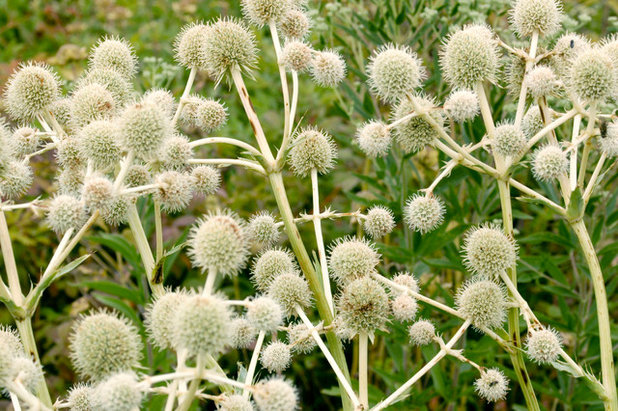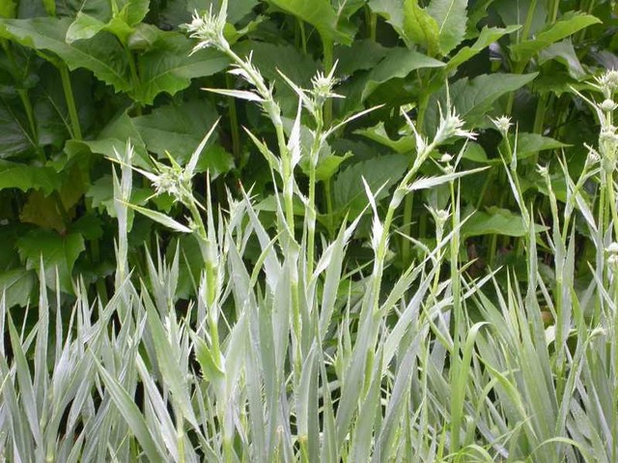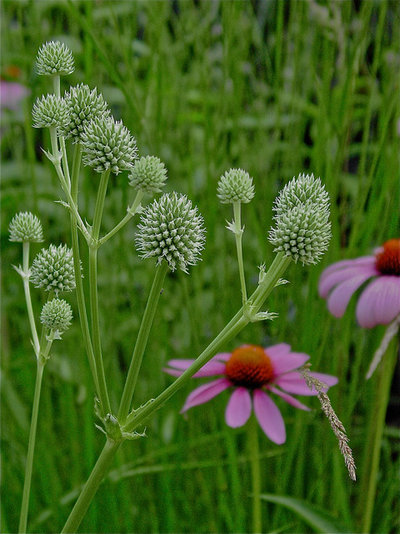Looking like a yucca but a member of the parsley and carrot family, rattlesnake master is a unique plant not used nearly enough. While it’s in bloom, the flower heads are insect magnets, and it hosts the rare rattlesnake-master borer moth.
Its common name has two histories: The dried seed heads were used as baby rattles by Native Americans, and the pioneers believed its roots could cure rattlesnake bites. Let’s see if I can convince you to give this perennial a try.

Frank Mayfield
Botanical name: Eryngium yuccifolium Common name: Rattlesnake master
Origin: Native from Minnesota down to eastern Texas and the Gulf Coast, Southeast, Midwest and East Coast
Where it will grow: Hardy to -40 degrees Fahrenheit (USDA zones 3 to 8; find your zone)
Water requirement: Moist to dry soil
Light requirement: Full sun to 25 percent shade
Mature size: 4 feet tall and 2 to 3 feet wide
Benefits and tolerances: Very low maintenance and drought tolerant; uncommon in nursery trade; superattractive to insects
Seasonal interest: Head of small white flowers, like globe thistle, in mid- to late summer.
When to plant: Spring to fall

Missouri Botanical Garden
Distinguishing traits. Its basal foliage makes it unique, and it would do well paired with softer grasses like bluestem or even sedges. You can see too in this image the somewhat silvery hue in the right light.

Brian Maloney Design Associates
How to use it. The middle of the border might be best, given its midheight range of 3 to 4 feet, but you can bring it forward, too (but beware the spiny leaves). Mix it with a perennial bed of other native prairie wildflowers or put it in the spotlight surrounded by shorter foliage-intense plants or ground covers. Bees love it. Butterflies love it. You should love it.
Planting notes. With a deep taproot, this is a plant you don’t want to move, but that means it’s also a low-maintenance winner once established. It’s at home in clay, rocky, dry and moist soil.
Browse plants native to your region





